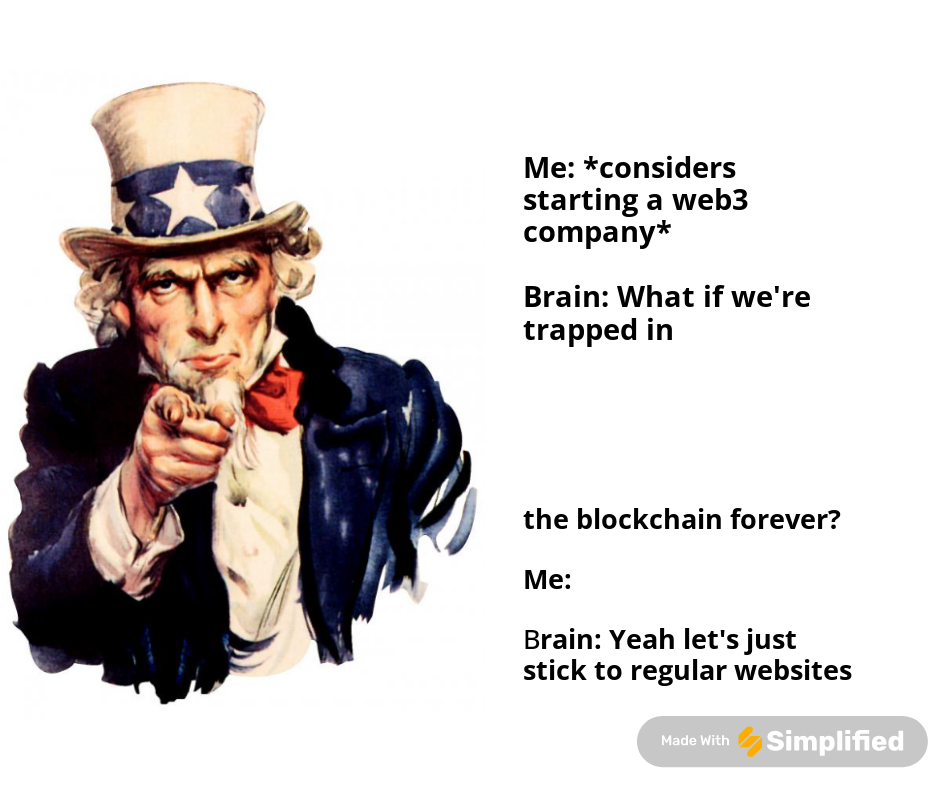What is Web3?

What is Web3?
In this post, We’ll be attempting to understand web3 without getting too jargon-y or technically, if that's even a word. The plan is to get a deep scoop into the technology to better understand web3 and the concepts that back the technology.
To begin with, we invariably have to address the elephant in the room and first understand blockchain.
So What is the Blockchain?
Blockchain is an interpretation of the Distributed Ledger technology. Distributed ledger technology refers to a decentralized database that is spread across multiple nodes or locations. It allows for secure and transparent record-keeping without the need for a central authority.

Blockchain, on the other hand, is a specific implementation of distributed ledger technology. It organizes data into blocks, which are linked together in a chain using cryptographic techniques. Each block contains a timestamp and a link to the previous block, creating a secure and immutable record of transactions.

So, while blockchain is a form of DLT, not all DLT systems necessarily use blockchain technology.
once a transaction is recorded on the blockchain, it cannot be altered or deleted. Changing the data in any block would require altering the cryptographic hash of that block and all subsequent blocks, which is computationally infeasible due to the decentralized nature of the network and the consensus mechanisms in place. As a result, the data stored on the blockchain is considered tamper-proof and immutable, providing a high degree of trust and security for digital transactions and records.
Why is web3 different from web2?
Before we answer this question we need to understand how the internet works. Today’s internet is an interconnected web of computers that makes up a network. Information is shared between computers over this network to fulfil requests for chunks of data. Have a look at the illustration below.

A user requests a webpage like google.com, the request is sent over the internet and one of the many servers of Google responds with an HTML page as the response and as the user you would see the google home page. This is how Web2 currently works.
The data for the webpage and the consumer data collected on the website is stored centrally on the server and the owner of this data can choose to do what they want with that data.
Here is where web3 comes with a new proposed system and our next big question.
What is Web 3.0?
Web3 is an extension of the blockchain. In Web 3.0 the data is not owned by a single entity but instead shared.
There are three main pillars or components of web3:
Blockchain
Smart contracts
Digital assets and tokens
We’ve touched on blockchain briefly earlier, so we’ll move on to smart contracts.
Smart contracts are software programs that are automatically executed when specified conditions are met, like terms agreed on by a buyer and seller. Smart contracts are established in code on a blockchain that can’t be altered. We will dig deeper into this in future posts.
Digital assets and tokens are items of value that exist only digitally. We’ll be exploring all the different asset types and how they add value to the ecosystem.
Why is Web3 important?
As the word suggests this would be the third iteration of how we would interact on the internet. At the time when I am writing this post, we are not ready to fully adopt the web3 narrative because there are some obvious challenges. The computation speed of the blockchain is slow. But that is not as bleak as it sounds, even the lightning-fast internet that we have today had a time when it used to run on dial-up.
We are in a transitionary phase where a common term in the industry that flies around is Web 2.5. It's a bridge between the existing fast-paced highly-accessible Web 2 with the freedom and assetization of the web3. It is difficult for a company with no user base to take the leap into web3 and build a business model around the tech when the adoption of the technology itself is low. So to circumvent this organization go into a web 2.5 kind of an arrangement.
Transitioning to Web3 holds significant long-term implications that extend beyond technological advancements. Here's a deeper exploration of some of these potential implications:
Democratizing Access to Financial Services.
Empowering Individuals to Control Their Data.
In the current Web2 paradigm, large corporations often collect, control, and monetize vast amounts of user data without adequate consent or transparency. Web3 technologies offer the potential to shift control of data back to individuals through decentralized identity.Creating New Economic Models


